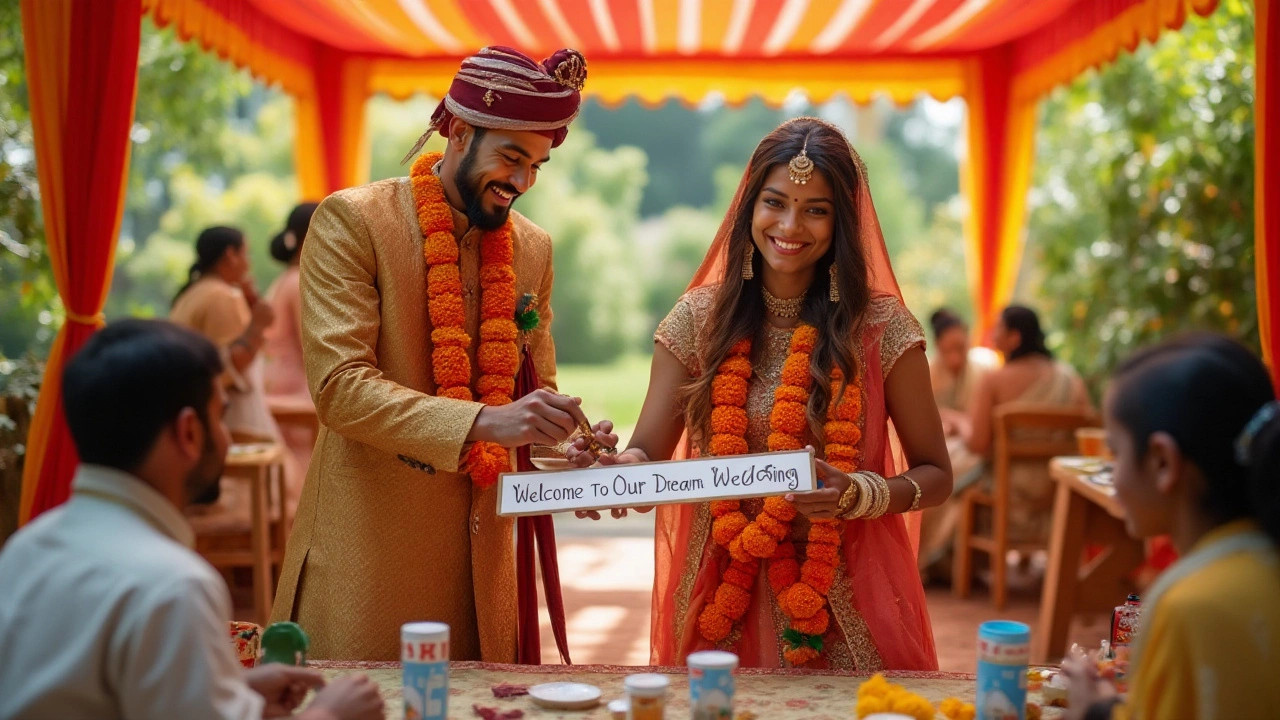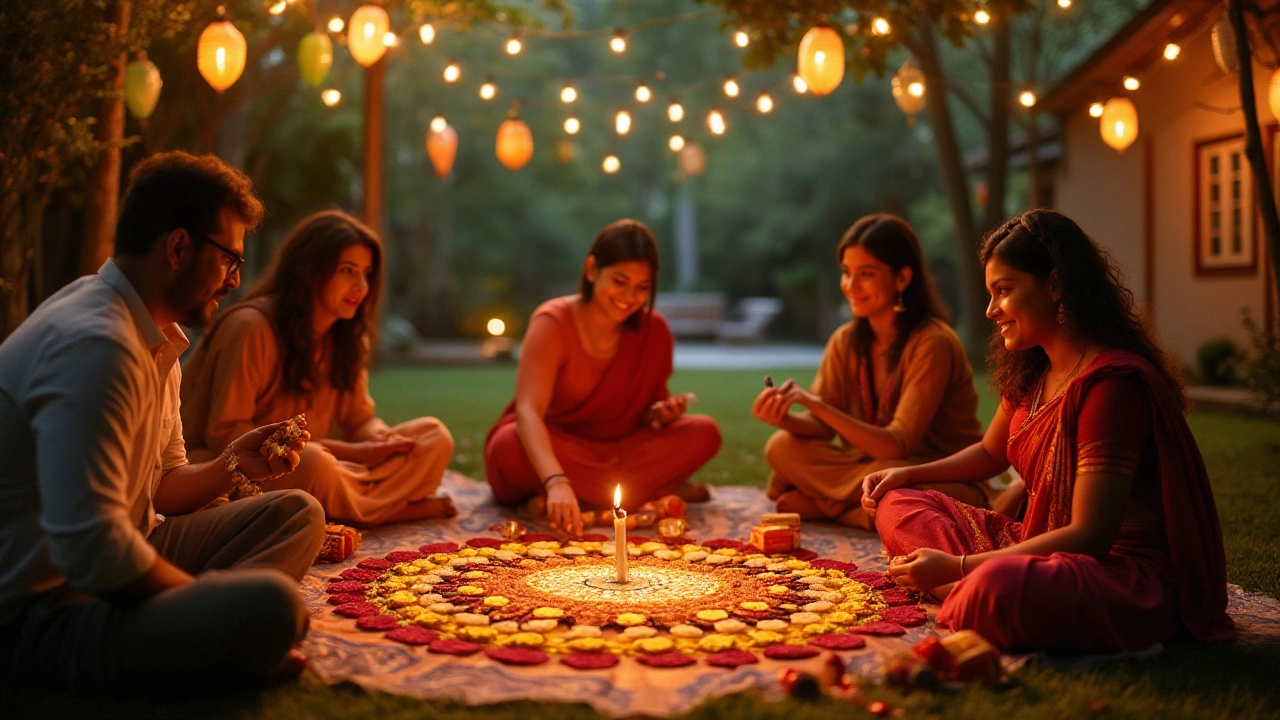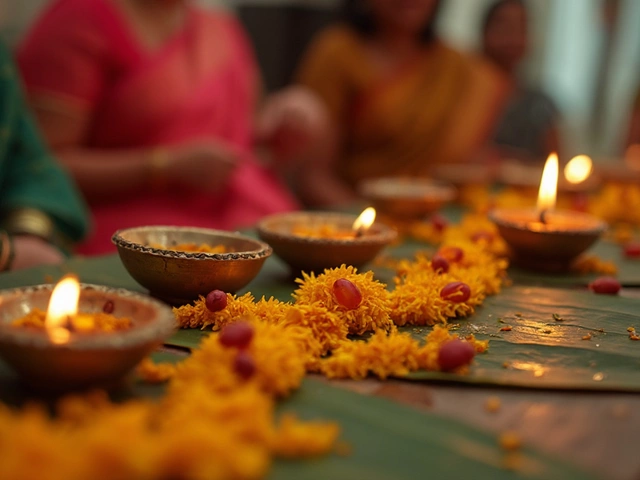
For those embarking on the journey of planning a do-it-yourself wedding, a whirlwind of excitement, ideas, and, yes, stress lies ahead. Imagine handcrafting each detail, infusing every aspect with your personal flair, and crafting a day that truly reflects your unique love story. It's a vision many couples dream of when they choose to take the reins of wedding planning into their own hands.
But as mesmerizing as this vision can be, the path to achieving it isn't without its bumps. From budget constraints to the precarious balance of managing time, the DIY route demands more than just craft supplies and Pintrest boards. It requires careful planning, a touch of realism, and a support system willing to dive into the creative chaos with you.
In this exploration, we'll sift through the joys and stresses that come with executing a DIY wedding. We'll uncover practical tips for balancing the workload with wedding day aspirations, ensuring that the beauty of your vision doesn't get overshadowed by stress. Ready to take this journey of creating an intimate, handcrafted celebration? Let’s delve in.
- The Joy and Challenge of DIY Weddings
- Budgeting for a DIY Affair
- Creative Control and Personal Touches
- Time Management Tips
- Teamwork Makes the Dream Work
- Balancing Stress and Satisfaction
The Joy and Challenge of DIY Weddings
Choosing a DIY wedding is akin to embarking on a creative adventure, one that offers a unique blend of joy and challenge. A DIY approach allows couples to infuse their personality into every element of their wedding, giving them the freedom to design their special day precisely as they envision it. Imagine crafting wedding decorations that reflect shared hobbies, or curating playlists featuring songs that have soundtracked significant moments in your relationship. Each creation is imbued with a story, turning a DIY wedding into a truly personalized celebration.
However, alongside the fun of crafting comes the reality of challenges. Time commitment is one of the most significant hurdles. Crafting every centerpiece, invitation, and favor can be a time-consuming labor of love. According to a 2023 survey from Brides magazine, the average couple spent around 400 hours planning their weddings, and that number rises significantly for those taking a DIY approach. Couples must often balance this demand with work and personal commitments, requiring them to master the art of juggling multiple responsibilities.
"A DIY wedding can be incredibly rewarding, but it's important to pace yourself and know when to ask for help," suggests wedding planner Sarah Michaels in The Knot's 2022 advice column. "The key is to enjoy the process without letting it overwhelm you."
Budget constraints can also add a layer of complexity. While wedding decorations can be more affordable when crafted by hand, costs can add up quickly with materials, tools, and potential missteps. It’s crucial to set a realistic budget and stick to it as closely as possible, taking into account unexpected expenses that are bound to arise. Friends or family members who bring skills like sewing or carpentry can be invaluable resources, helping to offset costs and also enriching the process with communal creativity.
The emotional connection that comes from crafting your own wedding cannot be overstated. Each detail crafted by hand tells a piece of the couple's story and adds an intimate layer to the ceremony. But achieving this dream requires patience and precision. Starting well ahead of time and planning methodically can help mitigate most stresses associated with DIY weddings. It's about embracing imperfections that sometimes come with homemade touches while keeping your focus on the love and commitment you're celebrating.
For many, the delight in seeing their guests' reactions to personalized creations outweighs any stress encountered along the way. The combination of joy and stress intertwines, making it a highly personal and unforgettable experience. As DIY wedding enthusiasts often say, the road may be bumpy, but the scenic journey, filled with laughter, creativity, and love, makes it all worthwhile.
Budgeting for a DIY Affair
Diving into the world of a DIY wedding means setting sail on a financial journey that demands creativity around every corner. At first glance, one might assume that opting for do-it-yourself projects could significantly cut costs, but without proper planning, expenses can unexpectedly soar. Knowing where to allocate funds and where to save is crucial for maintaining a healthy budget.
Begin by breaking down the wedding into its main components: venue, attire, food, decor, and other essentials. Pinpoint what aspects of your wedding are non-negotiable in terms of quality or personal value, and list these as your top budgeting priorities. Often, couples find that venue and catering—usually comprising nearly 50% of wedding costs—are areas where professional services make more sense, leaving room for DIY touches in decor and additional personal elements.
The beauty of a DIY wedding lies in personalization, but with that comes the need for resourcefulness. Thrifting, borrowing, and utilizing community resources for items like chairs, tables, and even attire can save significant amounts. Consider reaching out to family and friends for unused wedding decor that can be repurposed or upcycled, with the understanding that not every detail needs to be brand new.
Wedding decorations are where many couples find they can exercise their DIY creativity while minding the budget. Craft supplies can add up, so purchasing in bulk from wholesalers or utilizing seasonal sales for materials like fabric, flowers, and lighting can stretch each dollar. Assembling a dedicated craft team from willing friends and family can help get the job done efficiently while creating memories along the way. In the words of renowned wedding planner Fiona Newbern, "A handcrafted touch brings warmth to any setting, but it's the shared effort with loved ones that creates the most cherished stories."
"Remember, you want to spend not just smartly, but meaningfully. Let each dollar reflect your values and personality."
Staying on track with your DIY wedding budget also involves tight monitoring and frequent check-ins. Keeping a detailed spreadsheet with estimated versus actual costs and due dates for significant expenses can prevent unwanted surprises. Utilizing apps designed for wedding planning can also assist in maintaining clarity and organization. It's wise to buffer unforeseen expenses with an emergency fund that cushions any surprises that need swift financial addressing.
Negotiation becomes a crucial skill in this process. From vendors willing to offer discounts for bulk orders or long-term rentals to family connections in the service industry offering friends-and-family rates, never underestimate the power of asking. These savings can add up, allowing room in the budget for unexpected splurges or simply less financial stress. The key is being both realistic and optimistic; know what you can afford, dream about what you want, and find that blissful middle ground.

Creative Control and Personal Touches
One of the most alluring aspects of planning a DIY wedding is the sheer amount of creative control you have over each and every element. This is not just a ceremony—it's a narrative, a backdrop to your love story, and DIY gives you the pen to write it exactly as you envision. From choosing the color palette that best represents your style to handpicking decorations that hold sentimental value, every decision is yours. This level of control offers an unmatched opportunity to weave personal touches throughout the event, something that can't always be achieved with a traditional, outsourced wedding plan. Each detail, down to the smallest elements like table settings or guest favors, could tell a piece of your story. Yet with this expansive canvas comes the challenge of filling it thoughtfully, without overwhelming yourself.
Brides and grooms often find that infusing their unique tastes into their wedding décor extends the experience into something authentically them. A couple choosing a rustic theme may decide to repurpose old barns, collecting vintage items over months to construct stunning centerpiece displays with old-fashioned charm. Another couple, perhaps passionate about sustainability, might undertake the task of making their wedding zero-waste, incorporating reused and recycled materials creatively. This not only enhances the aesthetic quality of the decorations but allows guests a glimpse into the values and interests of the newlyweds. These personal elements crafted by your own hands can resonate deeply with both you and your guests, often leaving a more memorable imprint than a picture-perfect setup planned by someone else.
While overseeing such creativity presents an amazing opportunity, it is worth acknowledging the potential stress tied to it. Those determined to take the reins often encounter creative blocks or decision fatigue—common threads in the tapestry of DIY wedding planning. When faced with this, it’s crucial to step back and remember what inspired you at the start. Perhaps looking back at a mood board filled with joyful, color-infused possibilities can redirect that sense of excitement. Or sometimes, allowing a trusted friend or family member's perspective can help lift the veil on new ideas or practical solutions you might not have considered.
“The satisfaction of seeing your vision realized, of knowing every strand of bunting and every mason jar was placed there by your hands, brings a sense of fulfillment that resonates far beyond the wedding day,” says event planner and author, Cindy Ashton.Choices driven by sentiment rather than trend can lead to a wedding that feels profoundly personal. For example, incorporating heirlooms, like a swatch from a parent's wedding dress or photos of loved ones into decorations, can evoke a sense of continuity and warmth. This one-of-a-kind ambiance, evoked by unique, meaningful decor, often leaves an indelible mark cherished for years. However, planning in this manner requires flexibility. An initial plan might morph to better suit emerging themes or unforeseen limitations, which is all part of the creative process.
Finally, remember that not everything needs to be accomplished alone. Balancing stress management with creative decisions is a group effort; friends and family are there to support the dream. They might bring fresh ideas or lend a hand with executing yours, making the process not only easier but more enjoyable. Organizing workshops or crafting parties allows loved ones to participate in creating elements for your big day—imagine the joy of constructing a flower wall or assembling intricate paper flowers together, fostering a sense of community and shared accomplishment.
Time Management Tips
Planning a DIY wedding often starts with a soaring sense of creativity, yet it's the groundwork of effective time management that frequently determines success. A well-planned timeline serves as a scaffold for your wedding planning journey, transforming seemingly insurmountable tasks into manageable, bite-sized chunks. Begin by creating a detailed master schedule, breaking down tasks week by week and month by month, right up to the big day. Use visual tools like calendars or project management software to map out deadlines in a way that's easy to digest, ensuring nothing slips through the cracks. Wedding planners often advocate starting preparations at least a year in advance for larger weddings, but for a more intimate affair, a six-month timeline might suffice.
Establishing priorities is another crucial step. Identify the elements of your wedding decorations and broader wedding plans that matter the most and allocate more time to them. This might mean focusing early efforts on essential tasks like venue scouting or crafting invitations while leaving smaller details like party favor assembly to a closer date. Balancing tasks evenly across time can prevent burnout, allowing you to maintain the joy and excitement of the process. A useful strategy is the '2-2-2 rule', which suggests tackling two big tasks and two smaller ones each week, ensuring steady progress without overwhelming yourself.
"Those who make the time to meticulously plan are often rewarded with a sense of calm and focus that's invaluable during the hectic days leading up to a wedding," notes renowned event planner Mindy Weiss.
An organized approach not only provides structure but also allows flexibility. Give yourself some breathing room by setting soft deadlines before the actual cutoff points, thus cushioning unexpected distractions that can pop up and derail progress. During this journey, communicating with your support network is vital. Enlist the help of family or friends and delegate tasks, embracing a team approach to reduce stress. Remember, involving others not only shares the workload but also infuses the process with warmth and camaraderie.
It’s helpful to leverage technology in this modern age—apps like Trello or Asana can be lifesavers. They keep everyone on the same page and provide a centralized hub for all things wedding-related. As you progress, keep track of deals and appointments efficiently by documenting them digitally, along with maintaining traditional lists for things that spark creatively during the day.
Adjusting to Unexpected Hurdles
Flexibility remains key when managing time effectively. Despite the amenable precision of digital tools and calendars, life often introduces unexpected variables. Whether it's a vendor delay or a creative idea that demands more time than anticipated, having pre-planned contingency slots can alleviate last-minute panics. Schedule buffer periods between major deadlines for rest, reevaluation, and recalibration. After all, your well-being is paramount, and a stressed bride or groom can't savor this once-in-a-lifetime journey. Each carefully managed minute contributes to celebrating the love you’re cementing, making this effort truly worth every second.

Teamwork Makes the Dream Work
When it comes to orchestrating a splendid DIY wedding, rallying a team you trust is more than just a wise idea—it's essential. Envision your wedding as a grand theatrical production. While you and your partner may be the directors, everyone you enlist becomes part of the vital cast and crew. Whether they're your closest friends or family members whose creativity you admire, having a dedicated team can mean the difference between a seamless celebration and a stressful scramble. By sharing the workload, you not only lighten your own burden but also infuse new perspectives and talents into your celebration.
This collaboration can bring unexpected joys, like witnessing the joy of crafting your own wedding decorations with those you love. When you enlist help, it's important to allocate tasks according to strengths and interests. Some may excel at floral arrangements, while others might have a knack for logistics or crafting. The dynamics of teamwork can transform stress into fun, creating lasting memories even before the big day arrives. It's crucial, however, to establish clear communication from the start. Setting expectations and timelines ensures everyone is on the same page, minimizing potential misunderstandings.
"Alone we can do so little; together we can do so much." – Helen Keller
To foster a positive and productive atmosphere, consider regular check-ins to celebrate milestones and address any challenges. This not only helps maintain motivation but also builds anticipation for the big day. A spirit of encouragement and gratitude goes a long way in keeping the team energized and committed. Another strategy is to break down tasks into manageable pieces, scheduling them strategically over time to prevent last-minute panics. Technology can be a helpful ally in this process; utilizing shared digital tools for planning and communication keeps everyone informed, making remote collaboration a breeze.
Statistics show that nearly 40% of couples who opted for a DIY wedding cite teamwork as their primary source of joy, according to a 2024 survey by the National Wedding Institute. This isn't surprising, given that working as a unit often cultivates a collective sense of achievement that resonates throughout the wedding. Careful division of labor not only allows for personal connections but can also save money, one of the common goals for many choosing the DIY route.
Remember, engaging your closest circle in the creation of your special day doesn't just reduce stress; it's an unparalleled opportunity to weave cherished friendships into the very fabric of your wedding. As tasks are checked off the list, what you'll find is a tapestry of love and effort, stitched together by those you hold dear.
Balancing Stress and Satisfaction
Planning your dream wedding with a DIY wedding approach can be both exhilarating and nerve-wracking. When the pressure begins to mount, it’s important to remember why you chose to do it yourself in the first place: for the opportunity to infuse every detail with your personality and love. This personal touch, however, often comes with the added weight of doing everything right and on time. The key is finding that perfect balance between the pressures of staying on budget, managing time, and ensuring each element meets your expectations.
One essential strategy to maintain this balance is to recognize the limits of what you can realistically do yourself. Sometimes, the best choice for your sanity might be delegating tasks to friends and family or hiring help for certain elements, no matter how small. The slight dip in control can often prevent unnecessary stress down the line. Including team members in your DIY process fosters a sense of togetherness and shared accomplishment, while allowing you to focus on tasks that truly require your attention.
Creating a clear timeline is another vital component to ensuring your wedding doesn’t transform into a pressure cooker. Generously estimate how much time each task will take, doubling or even tripling your initial guess to avoid last-minute panic. Many couples have found success by setting specific deadlines for completing DIY projects in manageable chunks, leaving time for inevitable hitches. As respected wedding planner Abby Larson suggests,
"Allow breathing room in your timeline to enjoy the moments leading up to the big day, not just the day itself."
Another helpful method for reducing stress is keeping an organized list or journal of ideas, plans, and materials needed. As visions and inspirations flood in, jotting them down ensures that nothing falls through the cracks. This practice also lets you track your progress, which can be immensely satisfying and encouraging. Physically seeing the tangible results of your efforts can be the morale booster you need when you start feeling overwhelmed.
We can’t overlook the importance of self-care while crafting this unforgettable DIY wedding. It's easy to get wrapped up in the whirlwind of planning, but maintaining regular breaks can prevent burnout. Carve out time during your planning process for activities that rejuvenate you, whether it’s a short walk, a yoga session, or sharing a quiet moment with your partner. These small breaks are essential to keeping stress at bay and maintaining the joy in your journey.
Considerations for Future Generations
In managing stress and satisfaction, it's worth pondering the souvenir of your DIY wedding experience that you'll share with generations to come. It might be the hand-crafted decor you saved from being trashed, or the poignant story of teamwork and perseverance. Indeed, the relaxation that comes from reflecting on how you coordinated everything can be far-reaching, affecting how future family events are approached. Encourage future brides and grooms in your circle to value both DIY endeavors and the necessary help from others, so that they too might relish in the magic of planning such a meaningful day.



Comments
Post Comment